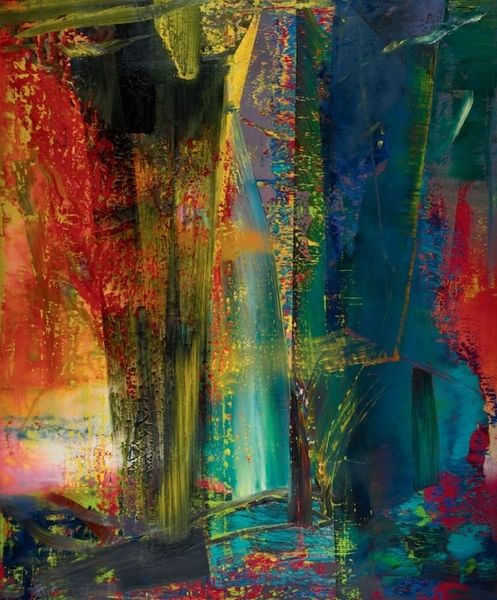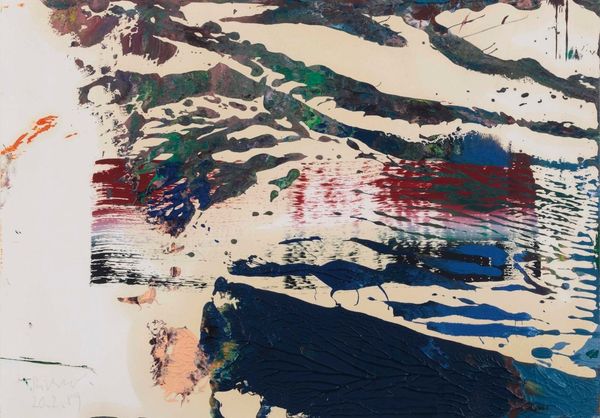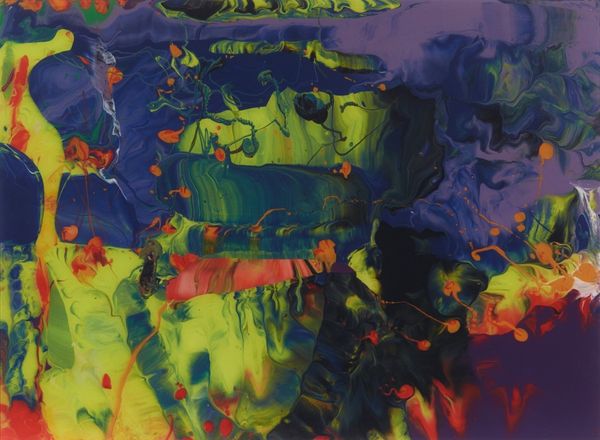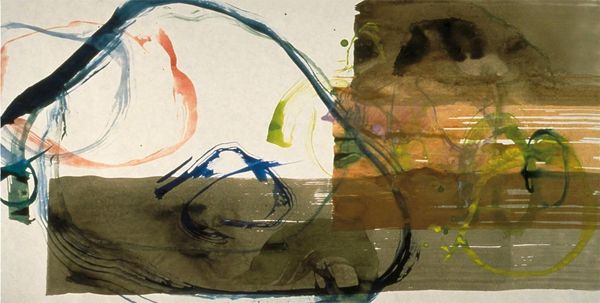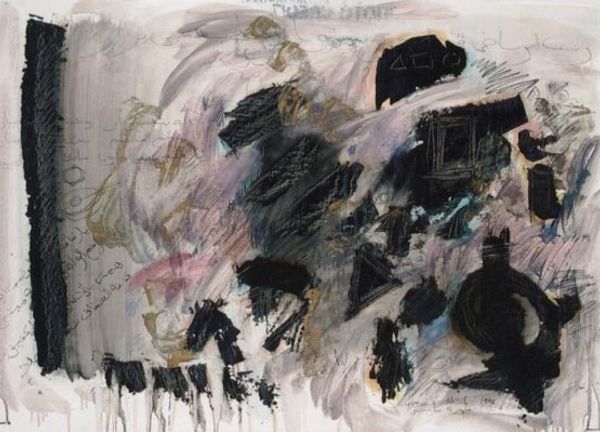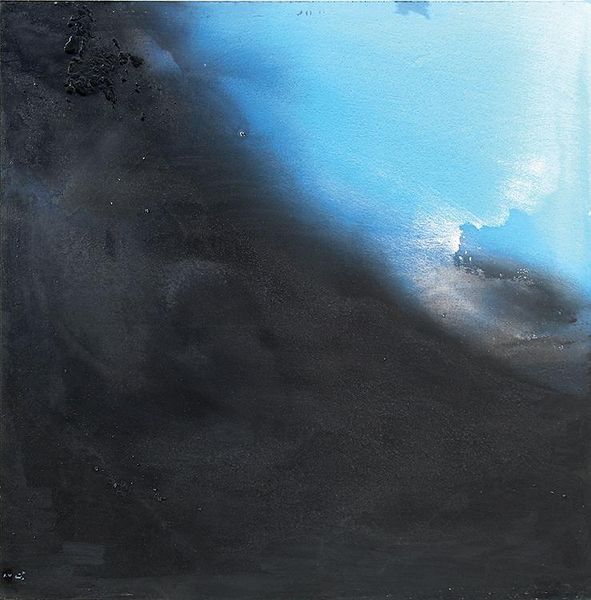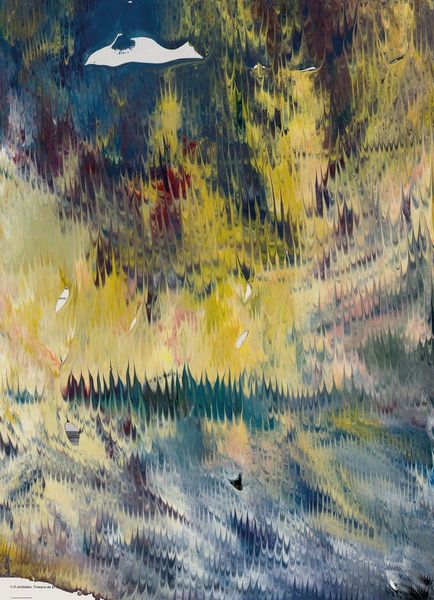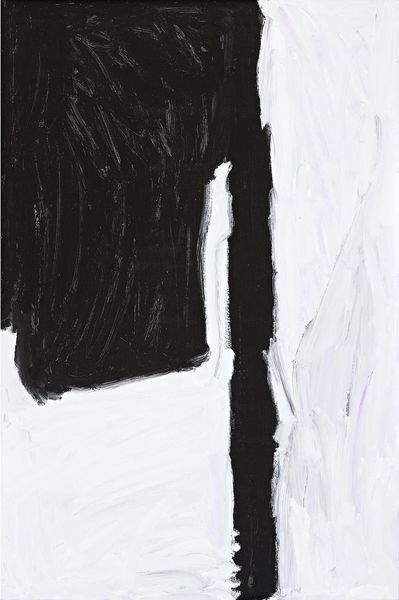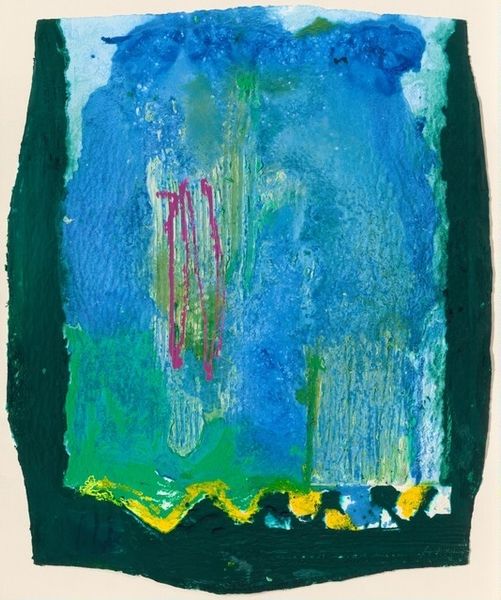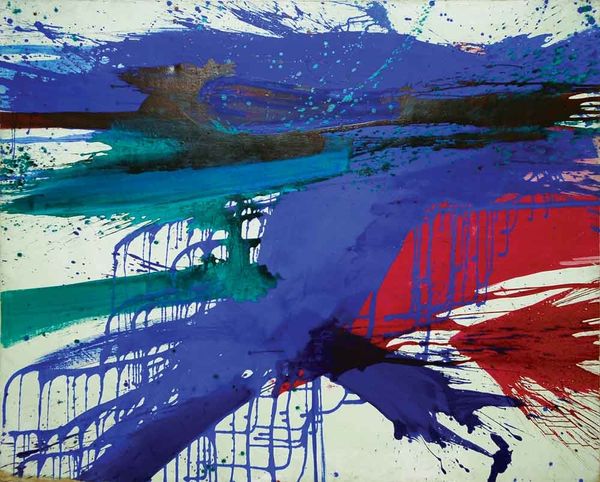
Copyright: Mostafa Dashti,Fair Use
Curator: Standing before us is an “Untitled” piece crafted by Mostafa Dashti in 1998, utilizing acrylic paint to achieve its captivating presence. What’s your initial response to it? Editor: Stark. A bit chaotic, actually. There's a brooding energy radiating from those blues and blacks. Almost as if a storm is brewing on the canvas. Curator: It's interesting that you pick up on a certain elemental force. Considering the timeframe in which this was made, as well as the artistic leanings of Dashti towards Abstract Expressionism, it seems more focused on conveying a sense of pure, unadulterated emotionality, perhaps frustration. Notice the aggressive brushstrokes, the layered impasto, the restricted color palette – monochrome even. Editor: Monochrome suggests constraint. Were there sociopolitical conditions impacting Dashti that might manifest as limitation here? The painting does possess a somber mood, despite the abstract form. Curator: Precisely. It is crucial to interpret art within its sociopolitical context. During that period, many Iranian artists grappled with self-expression. The use of abstraction became a subtle, yet powerful tool. So, considering gendered power dynamics present at that time and Dashti's identity, how can we engage this dialogue and further inspect limitations on expressions and freedom? Editor: Right, because even abstraction never truly escapes the artist’s lived experience, the institutions of art, the political narratives circulating at the time. I keep coming back to that vertical thrust, the darkness almost threatening to overwhelm the paler blues and greens struggling upwards. Is it reaching for something, or being pulled under? Curator: That sense of striving against a heavier force speaks volumes about the silent resistances artists adopted under oppressive regimes, all playing out metaphorically through color and form. Abstract expressionism gave room to process unspoken challenges. Editor: This makes me reconsider its place in the museum now too. Once a subtle act of resistance, now exhibited, legitimized. Does this dilute or amplify Dashti’s original intention, or impact its symbolic reading for a new, broader public? Curator: That's always the central question isn't it? Placing historical art in dialogue with contemporary conversations is critical for activating its relevance. This piece isn't just an abstract composition; it’s a testament to how artists persevere through censorship and the long legacy of oppression, an understanding which allows more space to be built around that discussion, beyond it simply being called "beautiful" for instance. Editor: It's certainly powerful and something that transcends simple labels. Now that you’ve provided this perspective, the emotional depth has really changed how I see it.
Comments
No comments
Be the first to comment and join the conversation on the ultimate creative platform.

